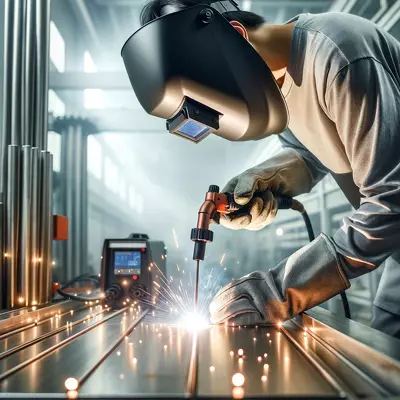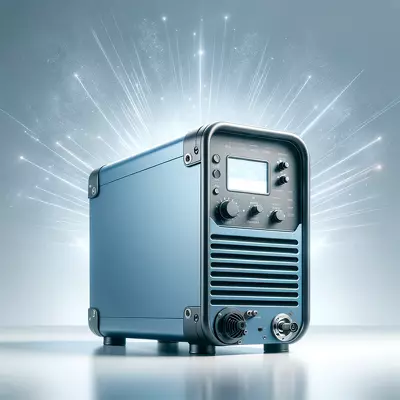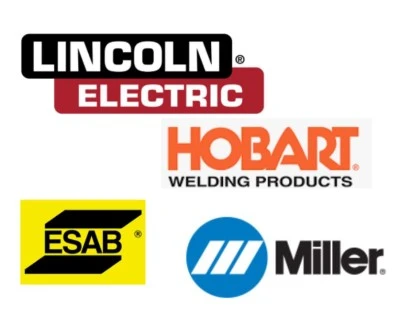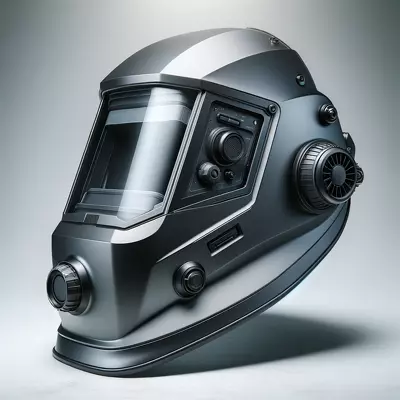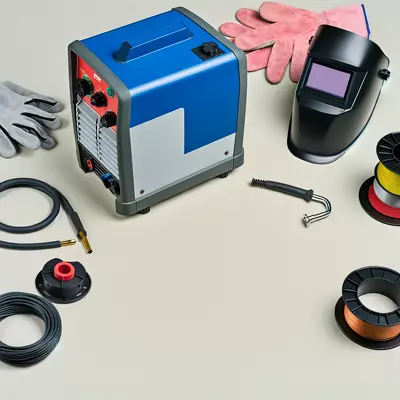The Artisan’s Choice: Finding the Best TIG Welder for Aluminum and Stainless Steel
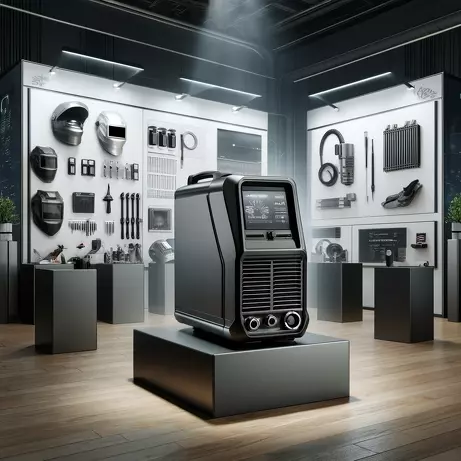
Choosing the best TIG welder for aluminum and stainless steel is crucial for professionals and hobbyists alike. This type of welder must offer precision, versatility, and the ability to handle the unique properties of these metals. With the right equipment, welding aluminum and stainless steel can achieve high-quality, durable welds for a variety of applications, from automotive repairs to artistic creations. This article guides you through selecting a TIG welder that meets these requirements.
As an Amazon Associate, we earn a commission from qualifying purchases.
I. Introduction
Finding the ideal TIG welder for aluminum and stainless steel requires an understanding of the welding process, the materials involved, and the specific needs of the user. Tungsten Inert Gas (TIG) welding offers unparalleled precision and quality, making it ideal for working with these materials, which are commonly used in high-end manufacturing and artistic applications. This guide will navigate through the complexities of TIG welding, highlighting the top choices for welders seeking to excel in welding aluminum and stainless steel.
II. Understanding TIG Welding
A. Principles of TIG Welding
TIG welding operates on the principle of using a tungsten electrode to produce the weld, with inert gas, typically argon, shielding the weld area from atmospheric contamination. This method allows for strong, high-quality welds with minimal spatter and excellent control over the welding process.
B. Importance of Aluminum and Stainless Steel
Aluminum and stainless steel are both materials that benefit significantly from the TIG welding process. Aluminum, being lightweight and corrosion-resistant, and stainless steel, known for its strength and resistance to tarnishing, are widely used in industries where precision and durability are paramount. TIG welding’s ability to control the heat input precisely makes it ideal for these sensitive materials.
C. Selection Criteria for TIG Welders
Selecting a TIG welder involves several criteria, including power output, AC/DC capability, pulse welding features, and portability. A welder that offers a wide amperage range provides versatility across different thicknesses and types of metal. For aluminum, AC welding capability is a must, while DC is preferred for stainless steel. Features like pulse welding can improve control and reduce heat input, which is crucial for thin materials.
III. Top TIG Welders for Aluminum and Stainless Steel
A. Hynade TIG Welder TIG200GPACDC
- Key Features
The Hynade TIG200GPACDC stands out for its dual voltage capability, allowing it to operate on both 110V and 220V, making it versatile for different settings. It offers both AC and DC modes, catering to the welding of aluminum and stainless steel, respectively, and features pulse welding, which is invaluable for controlling heat input. - Pros and Cons
Pros include its versatility in handling both aluminum and stainless steel effectively, while cons might involve a steeper learning curve for beginners due to its advanced features. - Suitable Applications
This model is well-suited for professional applications requiring precision and versatility, such as custom automotive fabrication and intricate artistic projects.
B. PRIMEWELD TIG225X
- Key Features
The PRIMEWELD TIG225X is renowned for its power and efficiency, with a 225-amp output that can handle thicker materials without compromise. It comes equipped with a CK17 flex torch, enhancing welder comfort and control during long welding sessions. - Pros and Cons
Its high power output and ergonomic design are significant advantages, though its size and weight might limit portability for some users. - Suitable Applications
It is ideal for industrial applications and heavy-duty projects where power and durability are required, such as in construction and heavy machinery repair.
Find the review of the PRIMEWELD TIG225X here.
C. YESWELDER TIG Welder YWT-200DC
- Key Features
This model is a versatile tool that supports TIG and Stick welding, making it a valuable asset for welders who require flexibility. It also features a lift start function, which is especially beneficial for welding stainless steel. - Pros and Cons
The YESWELDER‘s adaptability and ease of use are among its strengths, while its limitation to DC welding might restrict its use with aluminum. - Suitable Applications
With its dual welding modes and ease of use, it is well-suited for hobbyists and small workshops focusing on stainless steel and other DC-compatible metals.
IV. FAQs
Q: What makes TIG welding suitable for aluminum and stainless steel?
A: TIG welding offers precise control over the heat input and the weld pool, making it ideal for thin and sensitive materials like aluminum and stainless steel.
Q: Can TIG welders handle thick materials?
A: Yes, high-powered TIG welders can efficiently weld thicker materials, but the choice of welder depends on the specific thickness and type of material.
Q: Are all TIG welders capable of welding aluminum?
A: No, only TIG welders with AC capability can effectively weld aluminum due to the need to clean the oxide layer during the welding process.
Q: What is pulse welding, and why is it important?
A: Pulse welding involves alternating between high and low current, which allows better control over heat input, reduces distortion, and improves weld quality.
Q: How does dual voltage capability benefit a TIG welder?
A: Dual voltage capability allows a TIG welder to be used in different settings, offering flexibility between standard household outlets and industrial power sources.
Q: Can I use a TIG welder for both professional and hobbyist projects?
A: Yes, TIG welders are versatile tools that can be used for a wide range of applications, from professional to hobbyist projects, depending on their features and capabilities.
Q: What is the difference between a TIG and a MIG welder?
A: TIG welding requires more skill and is used for precise, high-quality welds, while MIG welding is faster and easier and is suitable for thicker materials and larger projects.
Q: What should I look for in a TIG welder for stainless steel?
A: For stainless steel, look for a TIG welder with DC capability, high power output, and features like pulse welding for better heat control.
V. Conclusion
A. Best Offer
The PRIMEWELD TIG225X is recommended for its robust performance, versatile applications, and inclusion of a high-quality torch, making it an excellent choice for welding aluminum and stainless steel.
B. The Alternative
For those seeking a more versatile option, especially for use in different environments, the Hynade TIG Welder TIG200GPACDC offers remarkable flexibility with its dual voltage capability and comprehensive features, making it a strong alternative.
VI. Suggested Readings
Welding is an art and a science, continually evolving with advancements in technology and materials. For those interested in delving deeper into the world of welding, especially TIG welding, the following books offer valuable insights and techniques:
- “Welding: Principles and Applications” by Larry Jeffus – This comprehensive guide covers various welding methods, with a strong emphasis on TIG welding, providing a solid foundation for beginners and experienced welders alike.
- “Modern Welding Technology” by Howard B. Cary and Scott Helzer offers an in-depth look at the latest technological advancements in welding. This book is ideal for those looking to stay at the forefront of the industry.
- “TIG Welding Secrets: An In-Depth Look at Making Aesthetically Pleasing TIG Welds” by Jody Collier – For those specifically interested in mastering the art of TIG welding, this book reveals techniques and tips for achieving professional-grade welds.
These resources serve as a bridge between novice welders and industry professionals, offering a wealth of knowledge that spans the technical aspects of welding to its artistic potential. Whether you’re starting your journey in welding or seeking to refine your skills, these books are invaluable tools in your quest for mastery.


